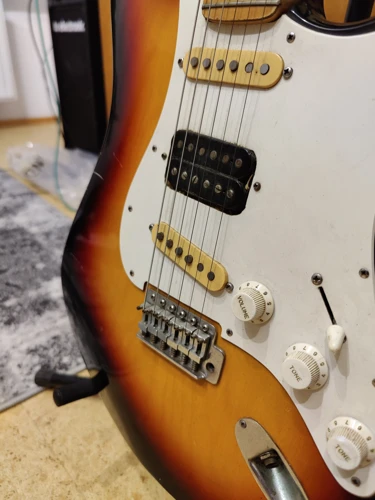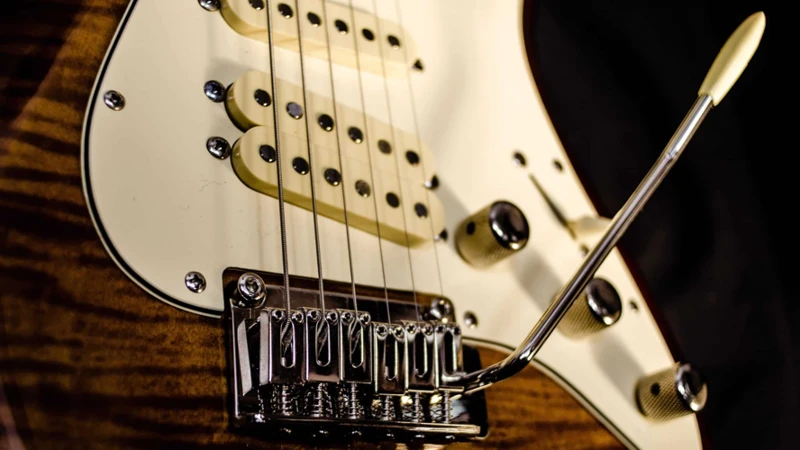When it comes to playing country guitar, the tone and sound are essential elements in capturing the authentic twang and warmth of the genre. One crucial aspect of achieving that classic country sound is the wiring of your guitar pickups. Pickup wiring plays a significant role in shaping the tone of your instrument, allowing you to customize your sound to suit your playing style and preferences. In this blog post, we will delve into the world of pickup wiring for country guitar, exploring different wiring options, pickup configurations, and tips for achieving that quintessential country tone.
Understanding Guitar Pickups
Before we dive into the specifics of pickup wiring for country guitar, it’s essential to understand the basics of guitar pickups. Pickups are electromagnetic devices that capture the vibration of the guitar strings and convert it into an electrical signal that can be amplified and heard through speakers. There are two main types of pickups commonly used in electric guitars: single-coil pickups and humbucker pickups.
Single-coil pickups are known for their bright, clear sound with a crisp attack, making them popular choices for country guitarists looking for that twangy tone. On the other hand, humbucker pickups offer a warmer, thicker sound with reduced noise and hum, making them versatile for various genres, including country music.
Types of Pickup Wiring
When it comes to wiring your guitar pickups, there are several configurations and options to consider, each influencing the tone and sound of your instrument. Here are some common pickup wiring setups used in country guitar:
1. Telecaster Wiring
The Telecaster is a classic choice for country guitarists, known for its bright and twangy tone. The typical Telecaster wiring configuration includes two single-coil pickups – one at the bridge and one at the neck. The pickups are wired in parallel, allowing for a balanced and articulate sound that is perfect for country licks and rhythms.
2. Stratocaster Wiring
Another popular option for country guitar is the Stratocaster, which features three single-coil pickups – one at the bridge, one in the middle, and one at the neck. The standard wiring setup for a Stratocaster includes a five-way pickup selector switch, giving you access to a variety of pickup combinations and tones. Stratocaster pickups are known for their versatility, allowing you to dial in the perfect sound for both rhythm and lead playing in country music.
3. Humbucker-Single-Coil Wiring
For country guitarists looking for a more versatile setup, combining a humbucker pickup with a single-coil pickup can offer a range of tonal options. This wiring configuration allows you to blend the warmth and depth of a humbucker with the clarity and twang of a single-coil pickup, giving you a dynamic sound that can suit a variety of country music styles.
4. Pickup Phasing
Phasing refers to the alignment of the magnetic poles in the pickups, which can affect the sound and tone of your guitar. In-phase pickups produce a full, rich sound, while out-of-phase pickups can create a thinner, more hollow sound with a unique character. Experimenting with pickup phasing can help you achieve different textures and tones in your country guitar playing.
5. Coil Splitting
Coil splitting is a technique that allows you to split a humbucker pickup into its two separate coils, effectively turning it into a single-coil pickup. This can give you access to a brighter, twangier tone, ideal for country music. By incorporating coil splitting into your pickup wiring, you can expand the sonic possibilities of your guitar and create a more versatile instrument for playing country tunes.
Tips for Achieving the Perfect Country Tone
Now that you have a better understanding of pickup wiring options for country guitar, here are some tips to help you dial in the perfect country tone:
1. Experiment with Pickup Height
The height of your pickups can significantly impact the sound of your guitar. Adjusting the pickup height can alter the balance between the bass and treble frequencies, allowing you to fine-tune the brightness and warmth of your tone. For a classic country sound, try raising the bridge pickup slightly to enhance the twang and clarity of your playing.
2. Use the Tone Control
Don’t overlook the tone control knob on your guitar – it can be a powerful tool for shaping your sound. Rolling off the treble with the tone control can soften the attack and smooth out the tone, perfect for creating mellow, laid-back country vibes. Experiment with different tone settings to find the sweet spot that complements your playing style.
3. Play with Different Pickup Combinations
One of the advantages of having multiple pickups on your guitar is the ability to blend different combinations for unique sounds. Try experimenting with switching between pickups or using a combination of pickups to find the perfect balance of brightness, warmth, and clarity for your country guitar playing. Don’t be afraid to explore unconventional pickup combinations to discover new tones and textures.
4. Consider Your Playing Style
Your playing style and technique play a significant role in shaping your tone. Pay attention to how you attack the strings, your picking dynamics, and your use of techniques like bending and sliding. Adjust your pickup settings and wiring to complement your playing style, whether you prefer a clean, twangy sound for classic country riffs or a gritty, overdriven tone for modern country rock.
Looking to enhance your country guitar setup? Check out our articles on country guitar straps, electric guitar pickups, guitar tone and amplifiers, building a pedalboard for country music, and guitar strings for valuable tips and insights to elevate your country guitar playing experience!
Conclusion
In conclusion, pickup wiring is a crucial aspect of shaping the tone and sound of your country guitar. By understanding the various pickup configurations, wiring options, and techniques available, you can customize your instrument to achieve the perfect country tone for your playing style. Experiment with different pickup setups, phasing options, and coil-splitting techniques to unlock a world of sonic possibilities and create a signature sound that captures the essence of country music. Whether you’re a traditionalist seeking that classic twang or a modern player pushing the boundaries of country guitar, mastering pickup wiring can take your playing to the next level and help you stand out in the world of country music.




